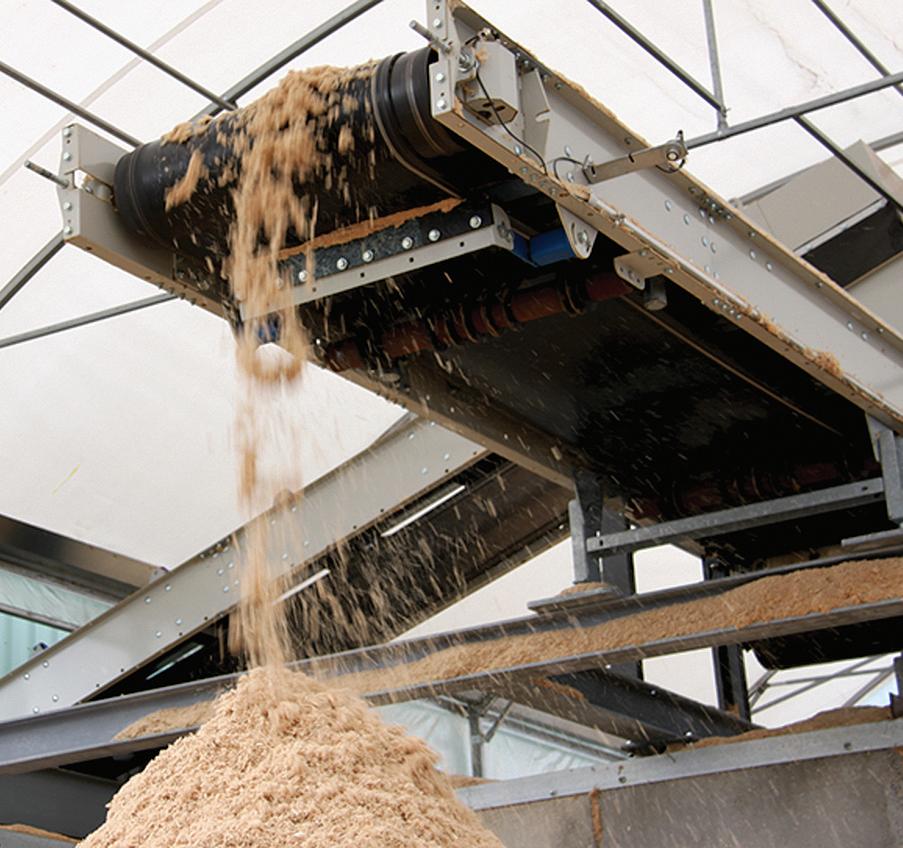
5 minute read
Ensuring long-term raw material security for growing media products in Australia
By Heath McKenzie and Rohan Davies
As supply chains become ever more challenging, AGS and other growing media suppliers have to adapt to ensure growers can continue to grow the highest quality stock. Heath McKenzie and Rohan Davies of Australian Growing Solutions detail some of the challenges faced by manufacturers in this space and what AGS are doing to ensure a secure and sustainable future for the horticultural industry.
Australia's horticultural and agricultural industries heavily rely on growing media products to ensure successful plant growth and yield. These products, which include substrates like composted pine bark, coir, peat and sand, play a crucial role in providing necessary nutrients, water retention, and support for plant roots. However, the availability of these inputs presents numerous challenges. In this article, we will explore the long-term security of supply for each of these materials and examine the potential solutions to overcome supply challenges.
Pine Bark
Pine bark has been a commonly used substrate in Australia for many years due to its favourable properties, such as excellent water retention and aeration capabilities. However, recent events have threatened the long-term security of pine bark supply. The devastating Black Summer bushfires in 2019/20 impacted over 50,000 hectares of Radiata pine plantations, leading to a significant reduction in available bark. Furthermore, the landscape industry's demand for pine bark has risen, leading to increased competition for this resource.
Another issue arises from the lower age of pine trees harvested for bark. As trees are harvested at a younger age, the amount of bark per tree diminishes, affecting the overall supply. To ensure the long-term security of pine bark supply, it is essential to implement sustainable forestry practices, promote reforestation efforts, and explore alternative sources of bark, such as other tree species or agricultural waste.
Coir
Coir, derived from coconut husks, gained popularity as a growing media substrate due to its renewable nature and favorable properties. However, the global shipping disruptions caused by the COVID-19 pandemic have significantly impacted coir imports. Increased shipping costs and delays have resulted in higher prices for coir-based products in Australia.
Moreover, the environmental impact of shipping coir long distances, also known as ‘carbon miles’, raises concerns. The carbon emissions associated with transportation contribute to climate change and negate some of the environmental benefits of using coir. To address these challenges, local coir production facilities could be established, reducing the reliance on imports and minimising the carbon footprint.
Peat
Peat, a traditional growing media component, has raised environmental concerns worldwide. The extraction of peat from wetlands contributes to habitat destruction, carbon dioxide emissions, and loss of biodiversity. Additionally, geopolitical issues, like the war in Ukraine, have further complicated the supply chain for peat products.
Given the impacts of peat extraction, it is crucial to reduce its use in growing media products. Alternatives like coir, wood fibre substrates, or compost-based mixtures can offer viable replacements for peat, providing similar or better growth results while being environmentally sustainable.
Sand
Sand has been seen as an essential component of growing media products for a long time, providing vital drainage properties for plant roots. However, the extraction of sand from riverbeds and coastal areas can cause significant environmental issues, such as erosion, habitat disruption, and sedimentation in water bodies. We use deep-mined sand generally from inland areas, due to the NIASA requirement and the risk of root borne pathogens in the river sourced product. Perlite, pumice and zeolite are also all mined products.
To mitigate these environmental concerns, sustainable sand mining practices and the use of alternative materials, such as pumice or perlite, could be explored. Utilising recycled materials in growing media can also help reduce the demand for virgin sand.

GrowFibre wood fibre substrate
GrowFibre Wood Fibre Substrate presents a solution to overcome supply challenges. This innovative substrate is produced from sustainably sourced wood chips, ensuring a renewable and eco-friendly material. The supply of wood fibre can be controlled through responsible forestry practices, promoting the replanting of harvested trees.
GrowFibre, a key component of a circular economy, plays a vital role in sustainable resource management. On one end, it involves the responsible harvesting and chipping, while on the other, it facilitates the supply of wood fibre for the cultivation of new trees to replace those harvested for wood chip production.
This innovative solution excels in water retention, aeration, and nutrient-holding capacity, making it a highly suitable alternative or complement to conventional growing media materials. Furthermore, its local production minimises shipping complications, reduces carbon emissions associated with transportation, and effectively ensures a reliable supply for Australian growers.
In conclusion
Ensuring the long-term security of raw materials for growing media products is crucial for the sustainability of Australia's horticulture and agriculture industries. While challenges exist for traditional materials like pine bark, coir, peat, and sand, innovative solutions like the GrowFibre Wood Fibre Substrate offer promising alternatives. By embracing sustainable practices, exploring local sourcing options, and promoting environmentally friendly substitutes, Australia can secure its supply of growing media products while safeguarding the environment for future generations.










